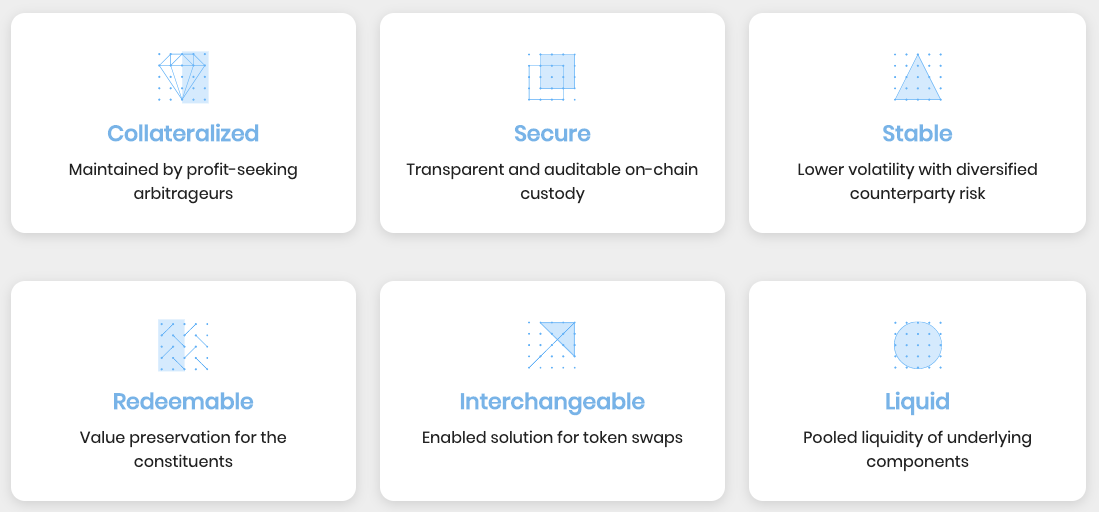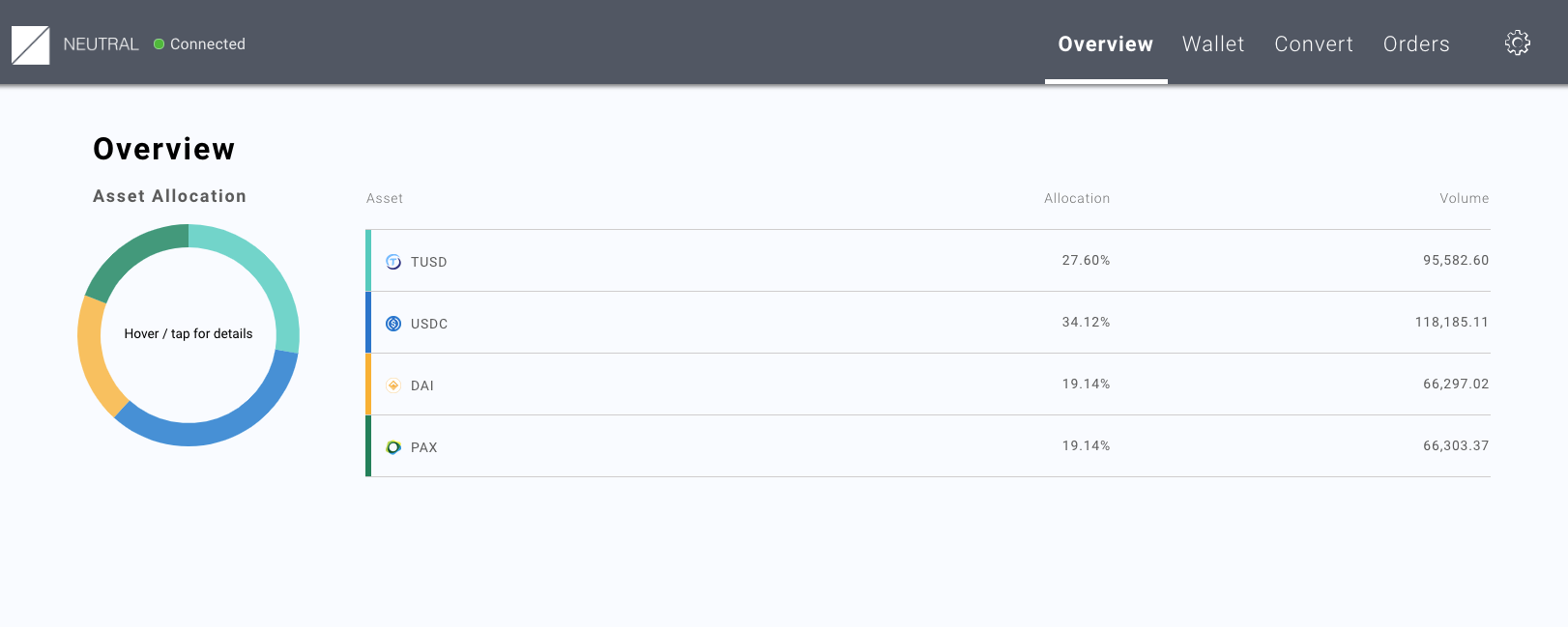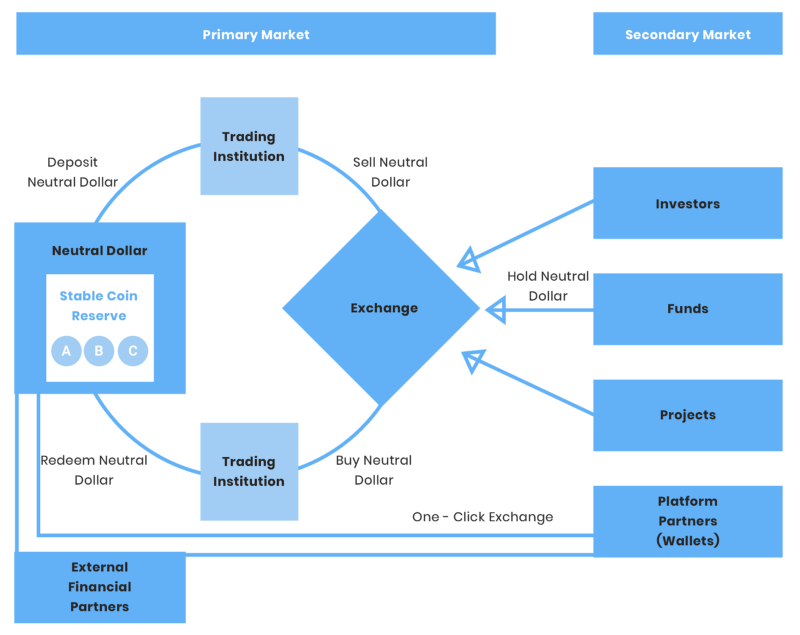Nelson from Neutral talks about the first meta-stablecoin, Neutral Dollar (NUSD), and use cases for basketing stablecoins.
Hello! What’s your background, and what are you working on?
Hey there! My name is Nelson, and I’m currently working at Neutral. Previously, I worked in traditional investment management, and always gone to appreciate the financial markets ever since. What got me into crypto was pretty much the same reason as everybody else’s - getting excited about a new way to redefine decision making and create applications that bring people together.
Crypto as an asset class was particularly exciting for me because people actually liked to talk about it, and it didn’t feel weird to be excited about it - imagine working in traditional finance and really being excited about bonds but no one else matched your enthusiasm. I became more progressively interested in crypto during my previous job since the asset class itself is very refreshing to learn about. I met the guys at Neutral and the mission really appealed to me so I decided to go for building something that would help crypto markets mature.
The goal of Neutral is really to improve market infrastructure by creating products that facilitate liquidity (thereby, growth) and repackage risk to gain better exposures to cryptocurrencies. Neutral primarily does this with blockchain-native aggregate assets. Similar to asset-backed securities or ETFs, these products make it more accessible for institutions and retail investors alike to gain exposures to different parts of the market. The mechanism design of such products is also very compelling, and has seen empirical success in traditional asset classes.

The first product is Neutral Dollar (NUSD), a basket of stablecoins. The composition of the basket can change to complement the growth of the stablecoin landscape, and the Neutral Dollar represents the exposure of the underlying collateral. Anybody can collateralize supported stablecoins for NUSD, and anybody can also take NUSD and redeem for any constituent. For example, a user can route USDC into NUSD, and break apart NUSD into PAX. This is all done and verifiable on-chain, so users can know the exact value of Neutral Dollar and the associated risk profile.

The use cases are really exciting, and shows that NUSD is not only a product but more of an ecosystem. Any use case that a stablecoin has can also be addressed by NUSD. If NUSD can’t directly satisfy a use case, then a user can break apart NUSD into a component that can. NUSD itself as a product has better risk characteristics simply due to diversification. Similarly, the liquidity of constituents are pooled and aggregated due to the creation/redemption mechanism (a great example is fixed income ETFs, which created an easy way to invest in a typically illiquid asset class).
So for end users, NUSD is a more stable stablecoin. For traders, it’s a natural way to engage in arbitrage and unlock price discovery mechanics on underlying stablecoins. For institutions, it provides an autonomous way to rebalance stablecoin exposures due to the underlying activity and help facilitate primary and secondary market activity. Any application for stablecoins, we want it to exist for NUSD and more.
What’s Neutral Dollar backstory?
Neutral Dollar’s inception actually came in many phases. Neutral wanted to create basket instruments, so it’s really more of an economic mechanism. We can take this mechanism and apply to different assets and create different products - such as a market cap weighted ERC20 basket, or group assets on different chains. We wanted to prove that our concept works in practice, and we’ve noticed some interesting use cases basketing stablecoins.
Contrary to the name, many stablecoins aren’t that stable. They’re stable for most of the time, but when the crypto market is volatile the last thing anybody wants is their stablecoin to deviate from their peg. Furthermore, a lot of stablecoins have amplified volatility either because some processes are not observable directly the market. Having a product that’s driven directly by the market actually reduces and hedges credit risk. So a reduction of risk leads to a more stable asset. In addition, price and demand are somewhat disjoint topics. Price doesn’t give insight to demand - liquidity does. Some stablecoins exhibit price stability, but lack efficiency in actual market activity.
So by basketing assets, there is actual incentive to utilize liquidity to supported constituents while creating a better end-user product. Furthermore, there is also more incentive to actually ensure price discovery exists throughout the levels of Neutral Dollar. Arbitrage opportunities exist both at the primary and secondary markets, and NUSD can be powered much more effectively by this flow of activity.

Our team consists of people whose knowledge stems from blockchain, investments, and trading. We wanted to create something very compelling because while crypto markets are exciting, the maturity is still so so very far from that of traditional markets. We believe that stablecoins are developing great use cases for blockchain applications such as trading, lending, and banking facilities - though individually the market is still very fragmented.
We want to showcase Neutral Dollar as a way to improve financial ecosystems and help users gain exposures more safely, transparently, and efficiently. Anybody can get Neutral Dollar by collateralizing supported stablecoins directly on our platform, or currently go to partnered secondary exchanges to acquire it as well.
What are your goals for the future?
We want to create more aggregate products, as mentioned before. Thematic, factor-based, market-cap products on existing assets and other chains - possibilities are endless. A question we ourselves have to ask, ‘is there going to be a demand for a product like this?’ And how can we encourage activity and liquidity? There’s actually a long tail of actively traded assets, but we have our eyes peeled on the progress overall. We can also explore derivatives, etc. whatever gets more people involved and improves financial activity in a safe and measured manner.
A smaller goal for the community is that we want to standardize an index on pricing (like stablecoin pricing). We have our pricing on our underlying constituents for Neutral Dollar, but it would be helpful if this was administered in a widespread way where people can use it robustly. The oracle problem may exist for some time, and we actually think having some controls such as signed pricing allows for replication of models to be created. The goal here is to reduce systemic risk, and having a proper index is one of the ways to do this. For example, if blockchain-derivatives reference some sort of pricing, it needs to be reproducible and of good quality to actually be used for promoting liquidity.
What are your future thoughts for the DeFi market?
DeFi is really cool, it’s a tight-knit group of people wanting to make a difference. There’s actually quite a bit of overlap between projects, so it’s worth collaborating because the opportunity for decentralized finance is massive. A snag that DeFi has that Neutral also experiences is messaging. Most DeFi projects require some expert level of domain knowledge.
For example, I once heard a joke about people who understand DeFi as people who know about complex derivative products or are Ethereum whales. Same thing with Neutral Dollar - for people to understand what it is, they need to stablecoins, and to get there they need to understand blockchain and finance…so on and so forth. We want Neutral Dollar to just be…a better digital dollar, but that messaging will take some time to be built as with other understandings of DeFi Project.
All in all, much time from DeFi projects come from explaining the goal, but the intent is to talk about all the use cases. We just need to get there to a level a trust where people can begin to talk less about how it works, but what we can do with DeFi in general. We’re still very early, but banding together really helps with encouragement and shows greater opportunity to broaden crypto use cases.
Where can we go to learn more?
- Website: neutralproject.com
- Twitter: @neutral_project
- Medium: @neutralproject
- Telegram: https://t.me/neutralproject
